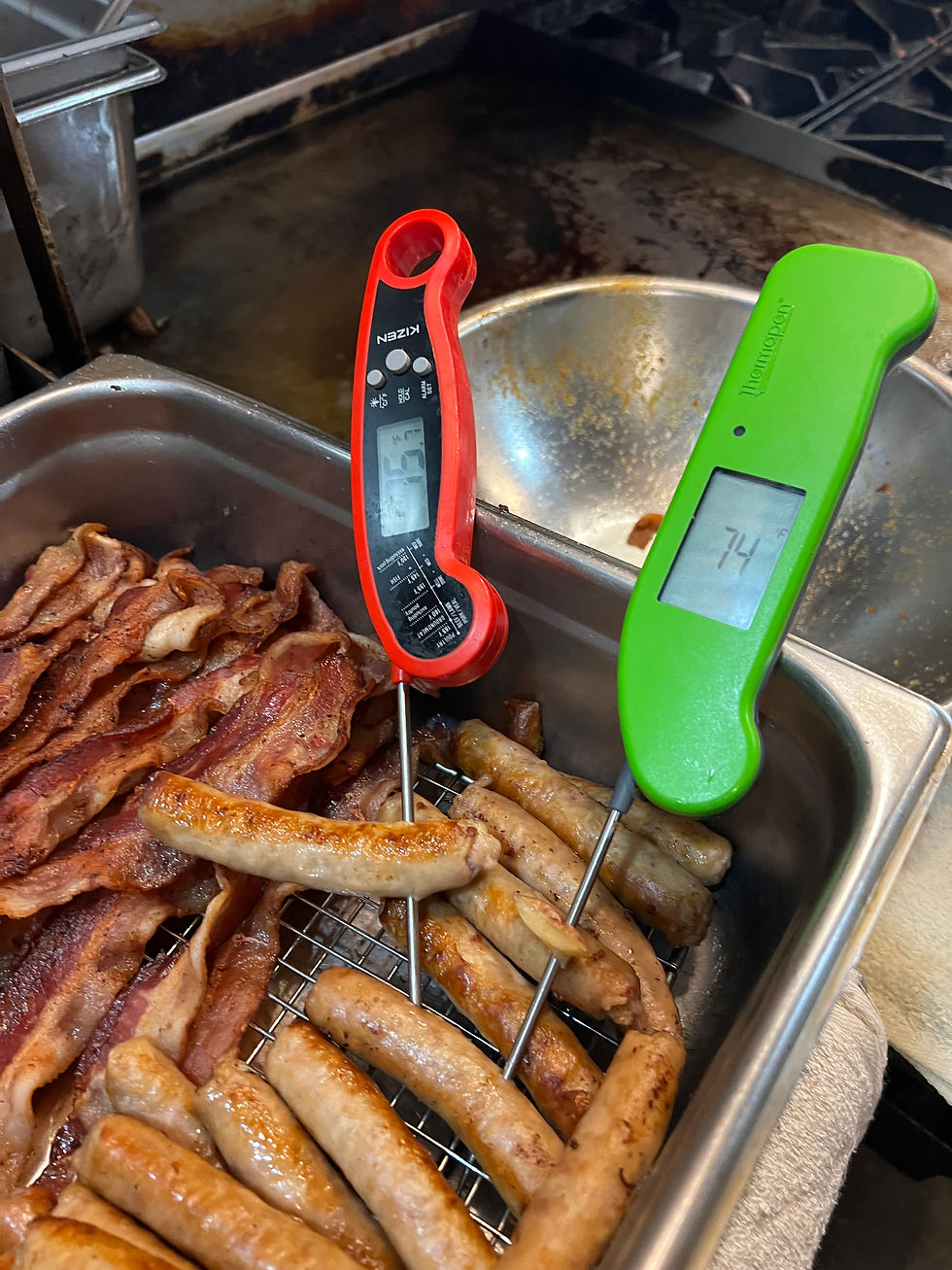Parasite Destruction for Raw Fish (OAR 3-402.11)
- mcfoodsafety
- Aug 21, 2019
- 3 min read
Updated: May 31, 2020
Sushi is the most familiar form of eating raw fish, but there are others ways raw or undercooked fish is finding its way to the consumer. Ceviche is a form of raw seafood that has the appearance of being cooked, yet has really only been marinated in a highly acidic citrus juice. Gravlax (or Gravalax) is a product of Scandinavian origin, and when translated means ‘buried or grave salmon’. It refers to the medieval practice of curing the raw fish with salt and a sprinkling of birch bark and burying it in the sand.
With regard to the mandatory consumer advisory when serving undercooked or raw items, you must asterisk the item and provide an advisory on the menu. In addition, any fish that has the potential of containing parasites are required to go through parasite destruction (see below) prior to being served raw or undercooked. The major concern with eating some raw fish is they can contain roundworms, tapeworms, herring worms, and seal worms. Farmed salmon is no longer required to undergo parasite destruction.
The mandatory freezing guidelines for wild salmon or any other fish that have the potential of containing parasites are:
Freezing at -4°F (-20°C) or below for 7 days (continuous time); or
Freezing at -31°F (-35°C) or below until solid and storing at -31°F (-35°C) or below for 15 hours;
Note: these conditions may not be suitable for in-house freezing particularly large fish (e.g. thicker than six inches).
The parasites:
ANISAKIASIS (ah-ne-se-KY-a-sis): Anisakiasis is the disease caused by infection with Anisakis worms. It has a complex life cycle and does not seem to pose a problem for the aquatic and marine mammal hosts. The problem arises when humans eat inadequately cooked fish containing these live nematode larvae.
When a human ingests the larvae, it either dies in the stomach or passes into the intestines and attaches itself to the lining. The most common result is severe abdominal pain, vomiting and diarrhea. Since the larvae can not survive in the human host, the situation resolves itself unless it causes a blockage in the intestine and surgery is required. The most commonly linked raw and under-cooked fish associated with Anisakis simplex are herring, cod, halibut, mackerel and Pacific salmon, but other types may be linked too.
Anisakiasis can be easily prevented by adequate cooking at temperatures greater than 145°F or freezing to FDA mandated time and temperature requirements (parasite destruction). Salting and marinating will not necessarily kill the parasites. It is required that all types of fish with potential risk, intended for raw consumption, to be previously frozen to kill parasites.
If you choose to freeze your wild salmon in-house, records must be kept and available for your inspector to view. Just like with the oyster tags, you must keep the records for 90 days after the time of sale and service. When you purchase frozen fish from a purveyor you must also obtain the documentation from them stating that it has been frozen to proper time and temperature regulations.
In summary:
Buy all seafood from approved, reputable suppliers only. Properly freeze to code, all fish you intend to serve raw, under-cooked, or fish solely marinated in citrus juices (as with ceviche). Follow the guidelines for parasite destruction. If you choose to freeze in-house, you must keep a daily freezer log, and the fish must be dated when it was put into the freezer so the days can be tracked. We highly recommend you purchase your fish from a purveyor that sells fish previously frozen and obtain certification that the seafood was frozen at proper temperature and time duration to meet the parasite destruction parameters. Some fish do not have parasites and do not need to be frozen. Fish that requires parasite destruction may not be served under-cooked, period.

Here are the FDA guidelines regarding fish that requires parasite destruction. Please note this is the FDA Food Code and the Oregon Food Sanitation Rules may differ slightly. Please ask your inspector if you need more clarification.



Comments